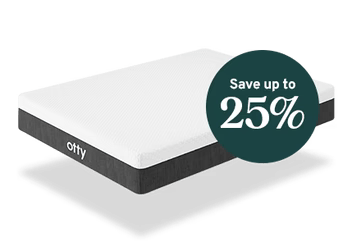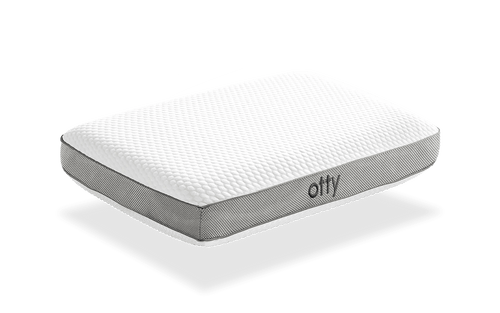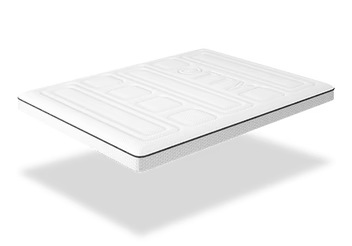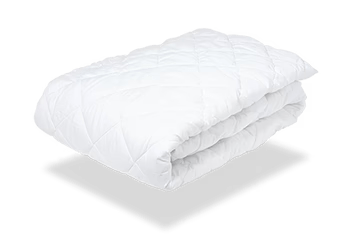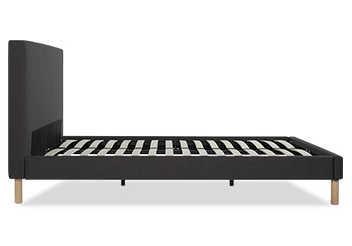Spring count in a mattress can be confusing. In our guide, we'll look at the optimal number of springs a mattress should have, how spring count differs by mattress type and how you can choose the perfect mattress for you based on spring count.
Table of contents
How Many Pocket Springs are in a Good Mattress?
Generally, a high-quality, firm pocket sprung mattress will have a minimum of 1000 springs. This number is not arbitrary but is based on extensive testing and customer feedback.
When it comes to determining the quality of a pocket sprung mattress, the spring count plays a crucial role.
However, it's essential to understand that the number of springs is proportional to the size of the mattress.
For instance, king-size mattresses will have more springs than single mattresses or double mattresses.
The spring count is usually based on a king-size mattress, so a smaller mattress will have proportionately fewer springs.
The number of springs you need in your mattress also depends on your individual sleeping needs.
If you require more support, perhaps due to a bad back, a mattress with a higher spring count would be more suitable.
On the other hand, if you're a single sleeper in good shape, a mattress with around 1000 springs, like the OTTY Aura 1000 Pocket Mattress, should suffice.
Does More Pocket Springs Mean Better Quality?
While it's true that a mattress with more pocket springs can offer more personalised support, the benefits start to diminish after a certain point. This is due to the fillings and pockets beginning to interfere with the transference of movement across the mattress.
Manufacturers often add as many springs as possible to their mattresses, knowing that customers perceive a higher spring count as a mark of quality.
However, these additional springs are often very small and layered on top of each other, replacing the comfortable fillings. They can also make the mattress more expensive without necessarily providing better value for money.
In reality, a well-made 2000 pocket sprung mattress can outperform a 4000 spring count mattress. This is often due to the quality of materials, construction methods, and the use of innovative technologies such as advanced memory foam.
Therefore, it's crucial to choose a reputable manufacturer and seek expert advice on the optimal number of pocket springs for your specific needs and budget.
The Role of Pocket Springs in Mattress Firmness
Understanding the relationship between pocket springs and mattress firmness can help you make an informed decision when purchasing a new mattress. Whether you prefer a firm spring or a soft medium, the number of pocket springs and the construction of the pocket sprung unit can greatly affect your sleeping experience.
How Pocket Springs Affect Mattress Firmness
The firmness level of a mattress is directly influenced by the number of pocket springs in the mattress. A higher number of pocket springs typically results in firmer mattresses.
This is because each spring works independently, providing more precise support and distributing weight evenly across the mattress.
However, it's not just the number of pocket springs that matter. The gauge of the wire used in the pocket sprung unit also impacts the firmness. Thicker wires result in a firmer spring, while thinner wires make for a softer spring.
So, when you're shopping for a mattress, don't just look at the number of pocket springs.
Consider the gauge of the wire too. Both these factors together will give you a good idea of the firmness level you can expect from your mattress.
Choosing the Right Firmness Level for Your Needs
Choosing the right firmness level for your pocket spring mattress is not as straightforward as it might seem. It's not just about the number of pocket springs.
The gauge of the springs, the type of fillings, and the base materials all play a significant role in determining the firmness of the mattress.
For instance, a mattress with a high number of pocket springs might not necessarily be firmer than one with fewer springs.
A 2000 pocket sprung unit could utilise a soft spring (e.g. 1.2mm), making it feel softer than a 1000 pocket sprung unit that uses a firm spring (e.g. 1.5mm).
Your body weight also influences the firmness level that's right for you. A larger person might benefit more from a mattress with a higher number of pocket springs, as their weight will be distributed over more springs, providing better support.
Conversely, a lighter person might find a mattress with fewer springs more comfortable.
So, when choosing a pocket spring mattress, consider not just the number of pocket springs, but also the spring gauge and your own body weight.
How are Pocket Spring Mattresses Made?
The process begins with the creation of individual springs. These are made from a single piece of wire, which is coiled into a spring shape.
Once the springs are formed, they're each encased in a fabric pocket. This is where the term 'pocket spring' comes from. The pockets are usually made from a synthetic material, but some high-end mattresses use calico pocket springs.
The encased springs are then arranged in a grid pattern and stitched together. This creates a flexible and supportive core for the mattress. The final step is to add layers of padding and upholstery, which provide comfort and shape to the mattress.
Summary and Key Takeaways
The number of pocket springs in a mattress can greatly influence its comfort and support levels
Generally, a higher number of springs means a better quality mattress
The quality of the springs, the materials used, and the overall construction of the mattress also play crucial roles.
However, choosing a mattress depends on your personal preferences and needs, and you need to account for many different factors besides spring count.
